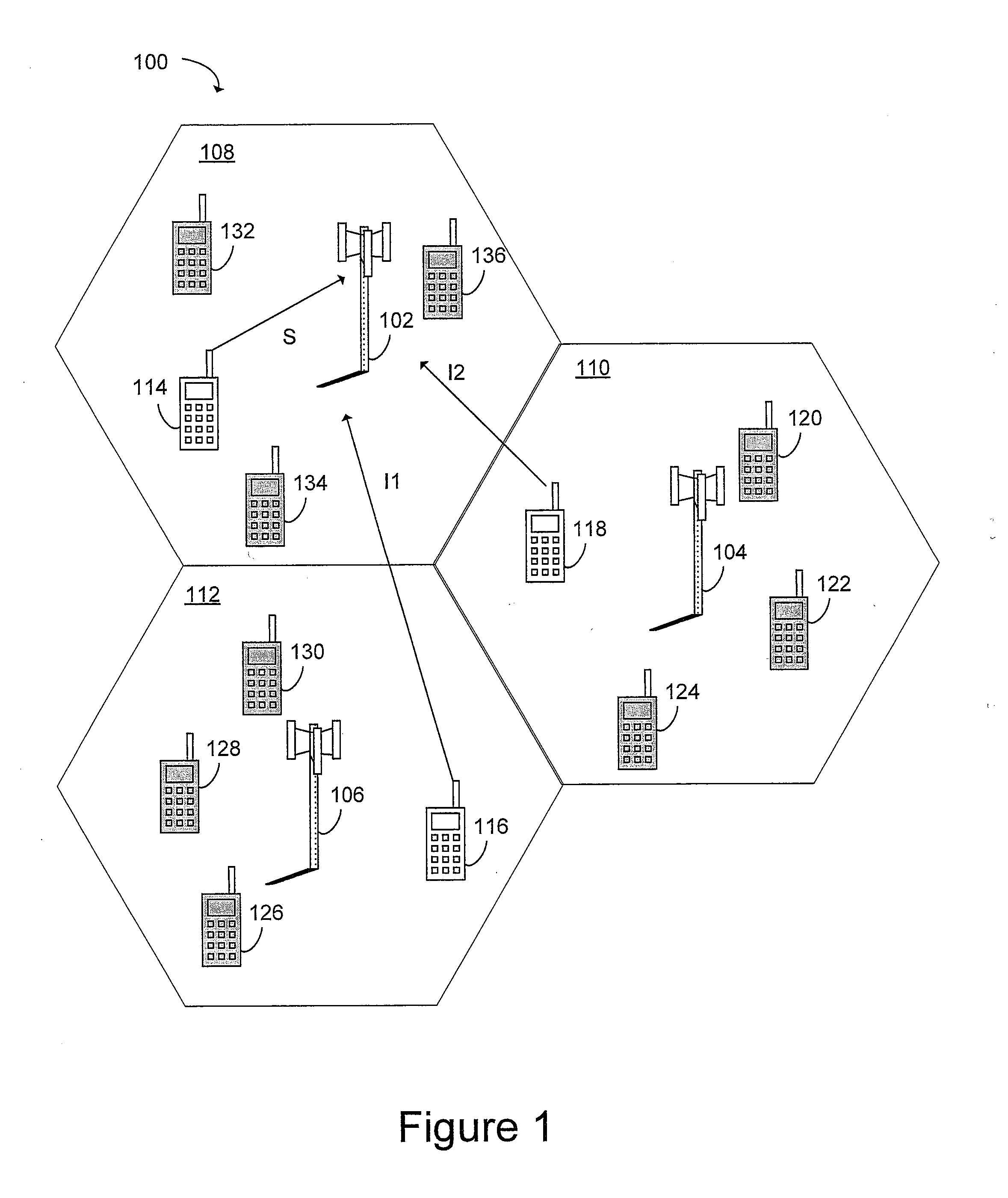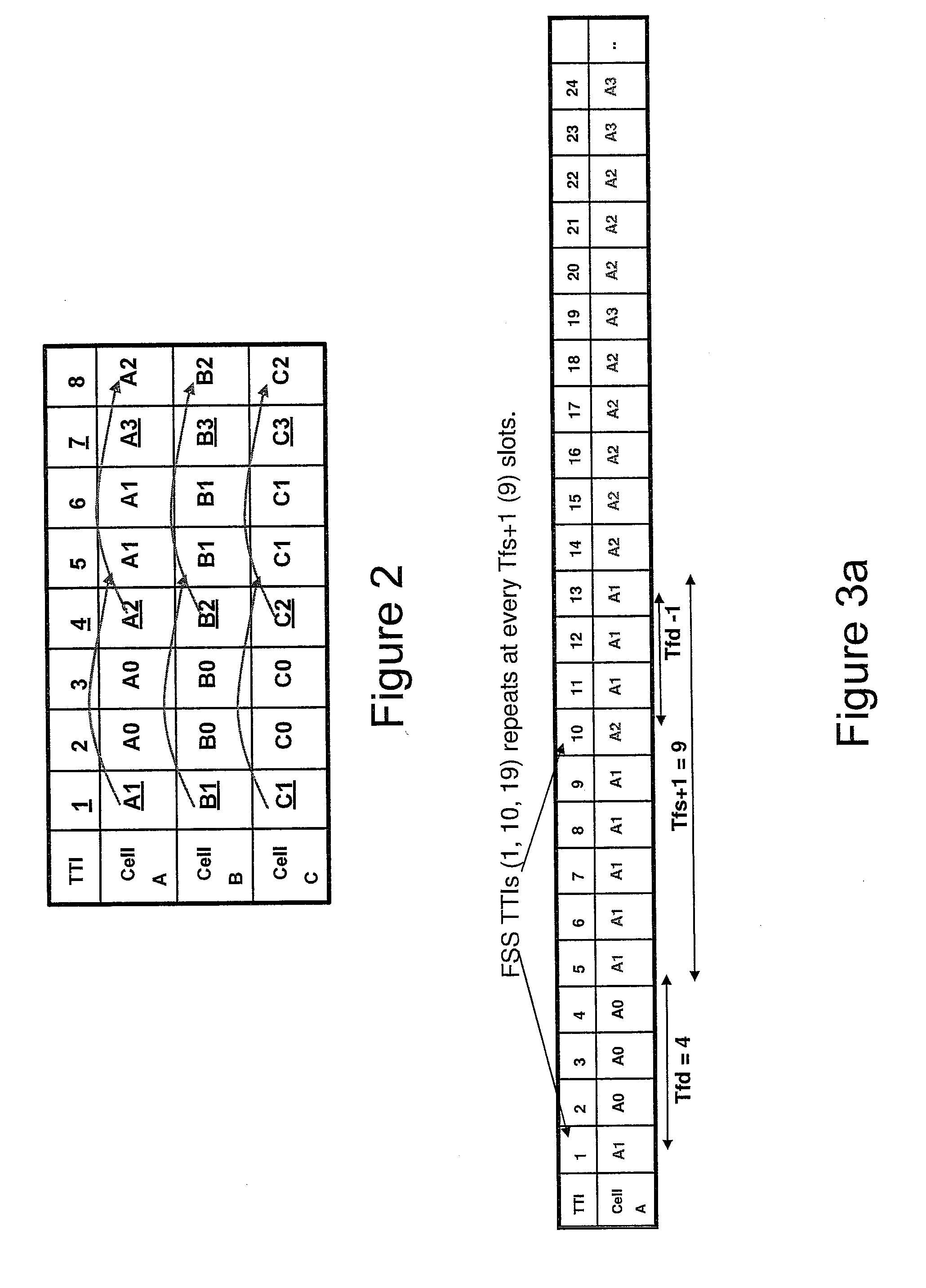System and Method for Scheduling Users on a Wireless Network
a wireless network and user technology, applied in the field of wireless communication systems, can solve the problems of difficult for the base station to determine an appropriate modulation and coding selection (mcs), use a considerable fade margin to minimize transmission errors, and cost of reducing data rate and system capacity
- Summary
- Abstract
- Description
- Claims
- Application Information
AI Technical Summary
Benefits of technology
Problems solved by technology
Method used
Image
Examples
first embodiment
[0038]The first embodiment criterion is that SFS slots are scheduled to be less than a FSS_max_Delay away from the related FSS slot, where FSS_max_Delay is defined as the time the SNIR measurement at a given TTI is considered as valid to predict the SNIR of a future slot. In an embodiment, if channel conditions such as fading changes fast, FSS_max_Delay is small and the number of SFS slots that can be used within that time is small. If the mean delay of SFS slots (T_fss) to the last FSS scheduling slot is large, compared to the FSS_max_Delay, then the impact on FSS gain is reduced. For example, if T_fss is larger than FSS_max_delay, those SFS slots would not achieve FSS gain. In an embodiment, SFS transmissions are performed a certain FSS_max_delay after the previous FSS slot, such that T_fss<FSS_max_delay. If the sfs_ratio is made larger, more SFS slots are available, however, the system has a higher T_fss. Therefore, an embodiment scheduling method limits sfs_ratio according to FS...
second embodiment
[0039]The second embodiment criterion is that SFS slots are assigned to be less than certain number of TTIs away from last measurement slot in order to maximize the prediction accuracy. In an embodiment, prior measurements with the same scheduling instances are used. If the speed of UEs are high, however, only the average signal measurements provide useful information because the instantaneous values changes quickly. Therefore, for these high speed UEs, a separate SFS slot is used in an embodiment. UEs with different speeds have different T_fss, however, and can be allocated to different SFS slots with similar speeds, delay and traffic requirements.
[0040]In the embodiments illustrated in FIGS. 3b-3m, a SFS scheduling ratio is maximized while the average delay from the last FSS TTI to the SFS TTIs is minimized and the FFS TTIs to the last measurement TTI is minimized. For example, FIG. 3b illustrates an embodiment UE schedule where T_fss=1, Tfd=2, TTI=Tfs, and sfs_ratio=50%. In TTI 1...
PUM
 Login to View More
Login to View More Abstract
Description
Claims
Application Information
 Login to View More
Login to View More - R&D
- Intellectual Property
- Life Sciences
- Materials
- Tech Scout
- Unparalleled Data Quality
- Higher Quality Content
- 60% Fewer Hallucinations
Browse by: Latest US Patents, China's latest patents, Technical Efficacy Thesaurus, Application Domain, Technology Topic, Popular Technical Reports.
© 2025 PatSnap. All rights reserved.Legal|Privacy policy|Modern Slavery Act Transparency Statement|Sitemap|About US| Contact US: help@patsnap.com



